
The Philippine Scouts (Filipino: Maghahanap ng Pilipinas/Hukbong Maghahanap ng Pilipinas) was a military organization of the United States Army from 1901 until after the end of World War II. These troops were generally Filipinos and Filipino-Americans assigned to the United States Army Philippine Department, under the command of American commissioned officers (though a handful of Filipino Americans received commissions from the United States Military Academy). Philippine Scout units were given the suffix "(PS)", to distinguish them from other U.S. Army units.

The Bataan Death March was the forcible transfer by the Imperial Japanese Army of 75,000 American and Filipino prisoners of war (POW) from the municipalities of Bagac and Mariveles on the Bataan Peninsula to Camp O'Donnell via San Fernando.
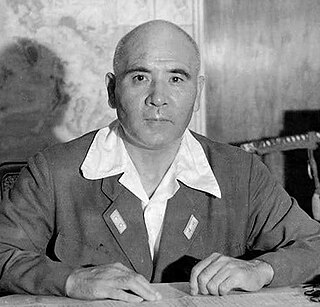
Masaharu Homma was a lieutenant general in the Imperial Japanese Army during World War II. Homma commanded the Japanese 14th Army, which invaded the Philippines and perpetrated the Bataan Death March. After the war, Homma was convicted of war crimes relating to the actions of troops under his direct command and executed by firing squad on April 3, 1946.

Tomoyuki Yamashita was a Japanese convicted war criminal and general in the Imperial Japanese Army during World War II. Yamashita led Japanese forces during the invasion of Malaya and Battle of Singapore, his conquest of Malaya and Singapore in 70 days earned him the sobriquet "The Tiger of Malaya" and led to the British Prime Minister Winston Churchill calling the ignominious fall of Singapore to Japan the "worst disaster" and "largest capitulation" in British military history. Yamashita was assigned to defend the Philippines from the advancing Allies later in the war. Although he was unable to prevent the superior Allied forces from advancing, despite dwindling supplies and Allied guerrilla action, he was able to hold on to part of Luzon until after the formal Surrender of Japan in August 1945.

The Raid at Cabanatuan, also known as the Great Raid, was a rescue of Allied prisoners of war (POWs) and civilians from a Japanese camp near Cabanatuan, Nueva Ecija, Philippines. On January 30, 1945, during World War II, United States Army Rangers, Alamo Scouts and Filipino guerrillas liberated more than 500 from the POW camp.

Ghost Soldiers: The Epic Account of World War II's Greatest Rescue Mission is a non-fiction book written by Hampton Sides. It is about the World War II Allied prison camp raid at Cabanatuan in the Philippines.
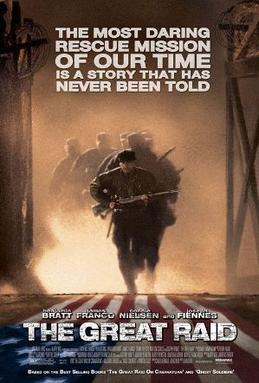
The Great Raid is a 2005 war film about the Raid at Cabanatuan on the island of Luzon, Philippines during World War II. It is directed by John Dahl and stars Benjamin Bratt, James Franco, Connie Nielsen, Marton Csokas, Joseph Fiennes with Motoki Kobayashi and Cesar Montano. The principal photography took place from July 4 to November 6, 2002, but its release was delayed several times from the original target of fall 2003. The film received negative to average reviews from critics and was a commercial failure.

The Manila massacre, also called the Rape of Manila, involved atrocities committed against Filipino civilians in the City of Manila, the capital of the Philippines, by Japanese troops during the Battle of Manila which occurred during World War II. At least 100,000 civilians were killed in total during the battle from all causes including the massacre by Japanese troops.
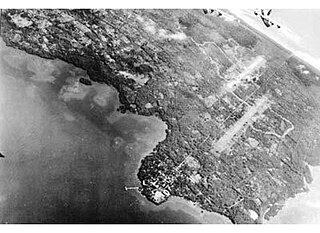
The Invasion of Palawan, was fought by U.S. liberation forces against the Japanese from 28 February to 22 April 1945, in a series of actions officially designated as Operations Victor I and II, and part of the campaign for the liberation of the Philippines during World War II, was waged to initiate the recapture of the southern islands of the Philippine archipelago, end the Japanese occupation, and secure them from remaining Japanese forces.

Camp O'Donnell is a current military base and former United States military reservation in the Philippines located on Luzon island in the municipality of Capas in Tarlac. It housed the Philippine Army's newly created 71st Division and after the Americans' return, a United States Army camp. During World War II, the reservation was used as a prisoner-of-war camp for Filipino and American soldiers captured by Japan during its successful invasion of the Philippines. About 60,000 Filipino and 9,000 Americans were housed at the camp. During the few months in 1942 that Camp O'Donnell was used as a prisoner-of-war camp, about 20,000 Filipinos and 1,500 Americans died there of disease, starvation, neglect, and brutality.

USS Quail (AM-15) was a U.S. Navy Lapwing-class minesweeper, named after the quail, a migratory game bird. It was laid down 14 May 1918 by the Chester Shipbuilding Co., Chester, Pennsylvania; launched 6 October 1918; and commissioned 29 April 1919.

The Japanese occupation of the Philippines occurred between 1942 and 1945, when the Japanese Empire occupied the Commonwealth of the Philippines during World War II.

Iwahig Prison and Penal Farm in Puerto Princesa, Palawan, Philippines is one of seven operating units of the Bureau of Corrections under the Department of Justice.
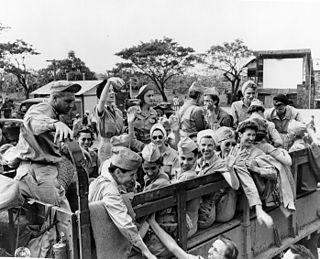
The Angels of Bataan were the members of the United States Army Nurse Corps and the United States Navy Nurse Corps who were stationed in the Philippines at the outset of the Pacific War and served during the Battle of the Philippines (1941–1942). When Bataan and Corregidor fell, 11 navy nurses, 66 army nurses, and 1 nurse-anesthetist were captured and imprisoned in and around Manila. They continued to serve as a nursing unit while prisoners of war. After years of hardship, they were finally liberated in February 1945.

The Pantingan River massacre was the mass execution of Filipino and American officers and non-commissioned officers Prisoners-of-War by members of the Imperial Japanese Army during the Bataan Death March on April 12, 1942, in Bagac, Bataan. Several hundred soldiers from the Philippine Commonwealth Army's 1st, 11th, 71st, and 91st Divisions on the march to the north of Mount Samat where the Pantingan River crosses the Pilar-Bagac Road were taken to the riverside. Most of them were hog tied with telephone wire, shot, bayoneted or beheaded by the Imperial Japanese Army.
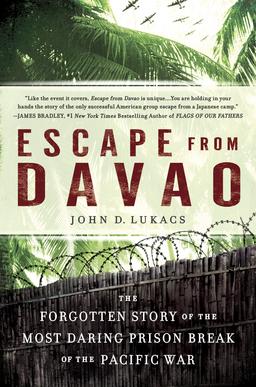
Escape From Davao: The Forgotten Story of the Most Daring Prison Break of the Pacific War, is a non-fiction, military history book written by John D. Lukacs. The book is the story of the only large-scale group of American prisoners of war to escape from a Japanese prison camp in the Pacific Theater during World War II. The ten escaped POWs were the first to break the news of the infamous Bataan Death March and other atrocities committed by the Japanese to the world.
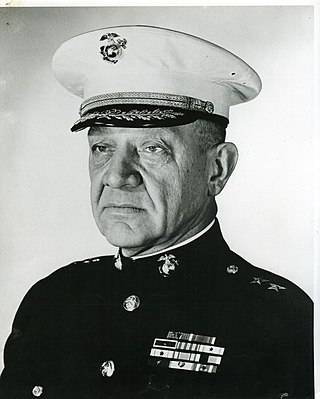
Reginald Heber Ridgely Jr. was a United States Marine Corps Lieutenant General. He was taken as a prisoner of war by the Japanese during World War II and was one of the few survivors of the infamous "hellships."
The Philippine War Crimes Commission was a commission created in late 1945 by General Douglas MacArthur as Supreme Commander of the Allied Powers to investigate the war crimes committed by the Imperial Japanese Army and Imperial Japanese Navy during the invasion, occupation, and liberation of the Philippines. The investigation by the Commission led to the extradition, prosecution, and conviction of Class A, Class B, and Class C defendants in Manila, Tokyo, and other cities in East and Southeast Asia through the International Military Tribunal for the Far East.
Between 1947 and 1949, 73 trials were conducted by the newly independent Republic of the Philippines against 155 members of the Imperial Japanese Army and Navy who committed war crimes during the Japanese occupation of the Philippines. This resulted in the conviction of 138 individuals and the death sentence of 79 by December 28, 1949. The trials became a political showcase of the Philippines in the international community to conduct a fair trial against war crimes.




















